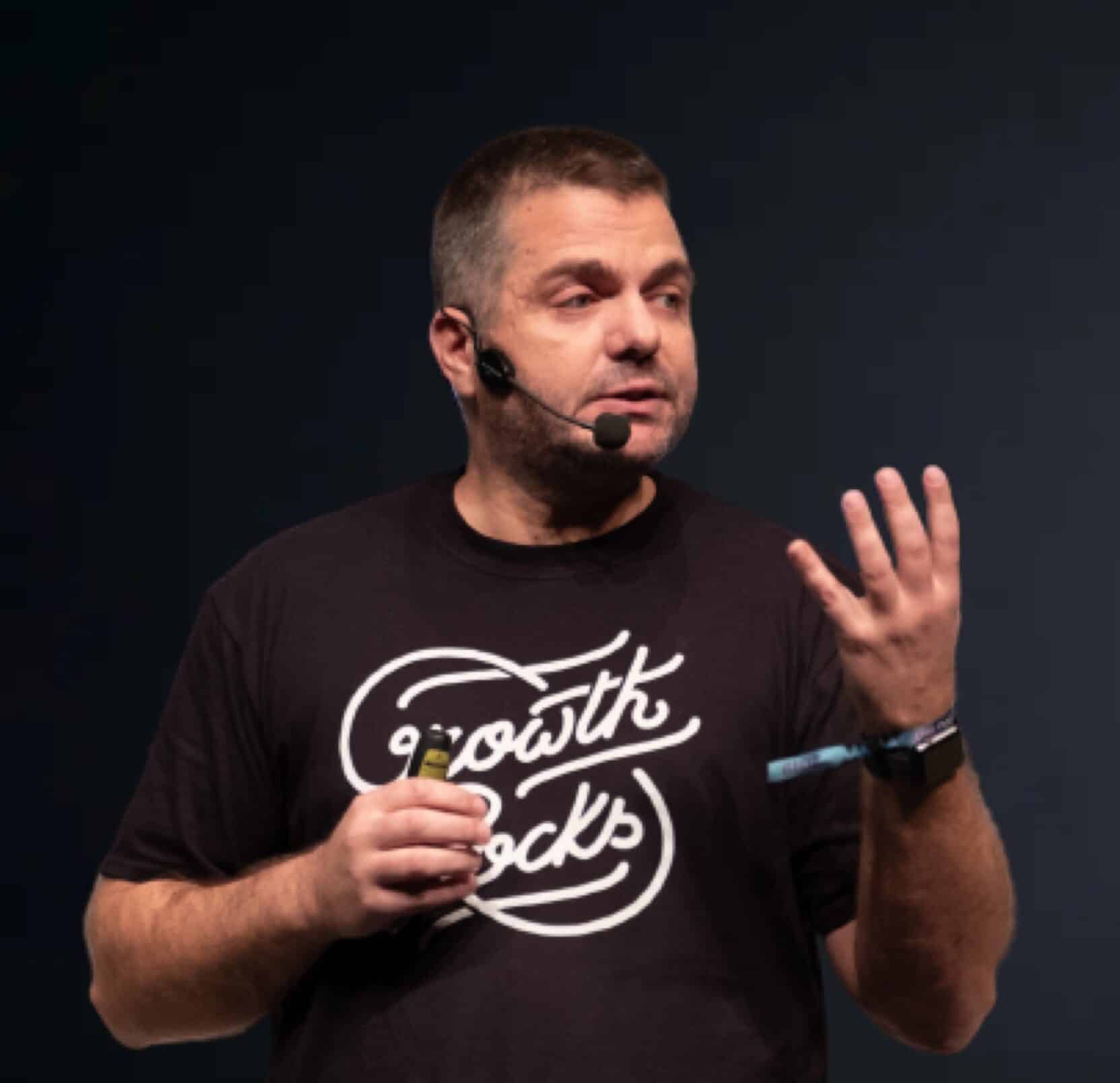Or is it just another word for SalesOps? And what are its benefits – if any?
Stick around to find out!
But first, let’s start with the basics.
What is RevOps?
Revenue Operations (RevOps) is the integration of marketing, sales, and service operations in order to create one department that keeps all its members accountable to revenue.
RevOps is a new organizational model that provides a better customer view before, during, and after the sale. It recognizes that revenue is a full process rather than an outcome.
Under this framework, a single team shares the common goal of maximizing business revenue instead of having three individual teams – with each team having its own KPIs and metrics.
Why Is Revops More Relevant Than Ever?
The internet and the smartphone have changed the way consumers think, search, and -ultimately- consume.
This transformation has radically changed the way consumers interact with products and services and has revolutionized consumerism overall.
Nowadays, customer expectations are at an all-time high. And so, regardless of industry, most customers expect businesses to know everything about them and all the history the brand has had with them until now.
Also, as today the touchpoints between businesses and customers are more than ever before, this makes the customer interaction even more complicated.
This is where RevOps comes in.
Through the RevOps organization, its processes, and its tools, information from the customer to the business and from one part of the business to the other flows transparently and faster.
Before RevOps
Traditionally, businesses, especially those in the B2B landscape, have had three different departments: Marketing Operations, Sales Operations, and Service (Customer Success) Operations.

Marketing Operations serves as the backbone of the marketing team. From strategic planning and budget management to data management and performance measurement, it has a quite broad scope. Marketing Operations builds the foundation upon which all marketing activities will take place.
Sales Operations is responsible for reducing friction in the sales process of an organization. Through its analysis and tools, sales operations bring a system to selling. Some of the key functions of the department include performance metrics analysis, sales recruitment and training, and the optimization of the sales process.
Customer Success Operations is working closely with customers-related teams, those being customer success, customer experience, and customer support teams. Its main focus is to improve the performance of all these teams and their workflow. At the end of the day, customer success operations improve the way an organization interacts with its customers at all levels.
So, without RevOps, what would usually happen between these departments is that leads generated from marketing would be handed over to the sales team. Then, the sales team would complain that some of the leads were the wrong people or even people from the wrong company. As a result, the marketing team would object that the sales team isn’t following up on the leads. And when sales pass leads to customer success, the same problem often occurs.
Enter RevOps
Now, RevOps breaks down the silos between these three departments and makes them more intertwined.

According to this framework, marketing is not only responsible for bringing new leads through various campaigns. Now, marketing also cross-sells and up-sell opportunities, as well as it tries to increase customer retention.
Now, sales gets involved at an earlier stage of the customer journey. As most of the journey is now complete before a lead even touches the sales department, the role of sales begins from as early as the awareness stage.
Finally, customer success now knows which opportunities are coming their way and gets involved before a sale is complete. Then, after the sale, customer success is responsible for preventing customer churn through its services.
RevOps Benefits
As stated by IDC, growing businesses, especially in the SaaS industry, lose 20-30% of their revenue to operational inefficiencies.
And, according to Forrester, companies that align their revenue operations grow 12-15 times faster than their peers and are 34% more profitable.
Therefore, a RevOps framework can be a nifty weapon in the arsenal of the companies that need to grow.
As such, establishing a RevOps framework comes with many benefits.
Faster sales cycles: RevOps takes the back and forth of your departments out of the picture. Thanks to the automation and reduction of friction it brings, RevOps minimizes unpredictabilities and brings you faster sales cycles.
Predictable business growth: Through systematic measurements, RevOps can let you know if your operations are working and if your organization can grow. Now, you can predict your business growth more accurately than ever.
Full funnel accountability: Each member of the RevOps team is responsible for the same metrics for the entirety of the customer’s lifecycle.
Revenue Growth: It really wouldn’t be called RevOps if the increase in revenue wasn’t one of the benefits. RevOps is accountable for revenue-related metrics and thus revenue is its main concern.
Speaking of metrics, let’s take a look at the key metrics RevOps deals with.
RevOps Metrics
Metrics such as Marketing Qualified Lead (MQL), Sales Qualified Lead (SQL), brand awareness, and marketing spend per customer make room for what is known as the RevOps metrics.
Here are those you should keep in mind.

Sales cycle length. The time between the lead’s first touchpoint and the point when a deal is closed. “Closed” doesn’t necessarily mean that you’ve made a sale, both a deal and a no-deal count as closed . The average sales cycle length for B2B companies is 100 days.
Win rate. It represents the success rate of your sales. The result indicates the percentage of closed opportunities that you won.
Win rate = # Won opportunities / # Lost + won opportunities
For example, if in December, you had 20 opportunities in total, and won 5 deals, your win rate is 25%.
Customer acquisition cost (CAC). The total average cost your organization spends to acquire a new customer.
Customer acquisition cost = # Total cost spent / # Total customers acquired
For example, if your organization spent $10,000 on advertising and marketing in a year and you acquired 2,600 new customers, then your CAC is $3.85
Customer churn rate. This metric focuses on customer retention. Churn shows how many customers leave the product or cancel their subscription over a given period.
Churn rate = # Customers at the beginning of the period – # customers at the end of the period/users at the beginning of the period
So, for example, if the total number of customers at the beginning of December was 4,000 a the total number of customers lost in December were 600, then the customer churn rate is 15%.
This metric is related to customer acquisition and indicates the total revenue a business expects.
Annual recurring revenue (ARR). This metric is most often used by businesses with subscription services (Hubspot, Adobe Creative Cloud, Spotify). ARR shows how much revenue you can expect in a year from your subscriptions.
Annual recurring revenue = # Total amount of yearly subscriptions + # Total amount from add-ons & upgrades / # Total amount lost from churn
For example, in case you earned $20,000 from yearly subscriptions, plus another $5,500 from add-ons and upgrades, and also lost $12,000 from canceled subscriptions, then your ARR is $13,500.
Similar to ARR, there is MRR which is a calculation for a monthly basis.
Other RevOps key metrics include Customer Lifetime Value (CLV), Forecast accuracy, Pipeline velocity, and Renewals & upsells rate.
For more growth metrics, you can read The 12 Growth Metrics You Should Start Tracking Today. At the same time, you need to remember to stay away from vanity metics.
Want to Know More About RevOps?
Do you know more about Revenue Operations and how it can help you and your business?
Feel free to contact us and let us find the best ways to grow your business!

Theodore has 20 years of experience running successful and profitable software products. In his free time, he coaches and consults startups. His career includes managerial posts for companies in the UK and abroad, and he has significant skills in intrapreneurship and entrepreneurship.



